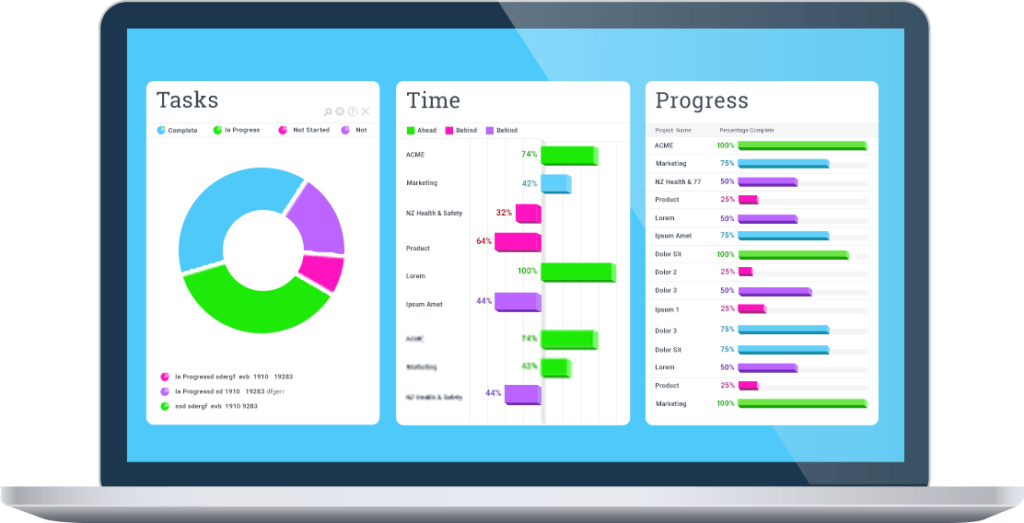


As technology advances, it makes sense that the workforce would advance with it. Modern technology has led to more and more companies hiring virtually. Hiring remote freelancers from around the globe has many benefits versus hiring locally.
One of the main perks is having experts from all corners of the world to choose from, making it much easier to find someone who is a perfect fit for the task at hand. Hiring a remote workforce also maintains a more self-driven workforce and gives your company a more diverse perspective by having the chance to work with people coming from many different cultures. Studies have also shown that virtual freelancers also boost efficiency!
On the other hand, switching from an office culture to remote freelancers is not always an easy transition. One of the questions I frequently hear from businesses thinking about converting to a more virtual model is “How do I effectively manage a virtual workforce?”

With the proper strategy in place, managing freelancers doesn’t need to be intimidating. We’ve put together some of the top tips for keeping a remote workforce efficient, professional, and productive.
1. Have regular and consistent meetings
One of the first things you should implement when managing remote freelancers is having a regular time for weekly, or even bi-weekly, meetings. Though one of the perks of being a freelancer is having the ability to build your own schedule, it’s still important when working with others to regularly have all their voices come together in one place. Regular meetings also offer a bit of structure and routine that can help them feel heard and at ease. To keep things more efficient, you should lay out all meeting topics beforehand. You will be amazed at how much can be accomplished in a short amount of time if you plan your meetings properly.
2. Keep some steady hours that work for multiple time zones

Working remote gives freelancers the ability to have some freedom with their schedules. However, when maintaining a global workforce, it’s always a good idea to make sure there is a bit of overlap in hours. This can be tricky when working with people from multiple time zones. But creating that overlap will allow them to quickly communicate any questions they may have and keep the workflow running smoothly. Apps and programs for effective scheduling, time clocks and hourly management and tracking systems can help this process go smoother.
3. Maintain a balance of flexibility and consistency
One of the major motivators for working freelance is the ability to have a degree of flexibility in one’s schedule. It’s important to allow freelancers some degree of flexibility, but make sure to balance it with some consistency to keep projects from tumbling into chaos. How much structure you wish to implement can vary depending on the type of project, but aside from agreeing on meeting times, talking about work hours and notice for days off can also help maintain some structure.
4. Do quarterly reviews to check in on freelancers

While most people love the freedom that comes with working remotely, remote work can also sometimes feel a little bit lonely and isolating. Not everyone is built for this style of work. Because of this, it’s important to check in on freelancers from time to time for an in-depth discussion about how they are coping with this style of work environment. These quarterly check-ins can also build a strong relationship and degree of trust between you and the people you are working with.
5. Be clear about your expectations and project goals
When working with a global workforce, especially one distributed over multiple time zones, it’s not always possible for people to reach out and get an answer instantly if they have a question or run into an issue. This is why it’s extra important to be as clear as possible about your expectations and project details from the start, ensuring everyone knows exactly what he or she is supposed to be working on so the project can remain on schedule.
6. Use time tracking software to manage hours worked

When working in an office environment, it’s easy to see how many hours people are putting into any given project. When working with remote freelancers, this can get a little trickier. Having people use time tracking software can be a great help to ensure that you know what hours are being put into the project at hand. There are several time tracking programs on the market, TimeDoctor, Roadmap App, and TickSpot are just a few of the options worth looking into. If you hire through FreeeUp, you can just use the software that’s built right into your FreeUp account.
7. Use screen sharing tools for better collaboration
Sometimes it’s much easier and more time efficient to show someone exactly what you are doing or working on versus trying to explain it over the phone or e-mail. There are several great programs that allow you to share your computer screen and do exactly that. Skype, Google Hangouts, and Slake all offer this feature, and are a great option if you are already using one of them for chat rooms or conference calls. However, you can also take it a step further with a program like TeamViewer or Join.me, which allow you to also take control of the other person’s computer remotely, offering the ability to truly collaborate on a project. Both also offer free versions for fewer members.
8. Use project management tools to keep everyone on track

While it’s tempting, especially with a small group to just try to wing it and manage everything via e-mail and conference calls, this can be a dangerous trap to fall into. Getting in the habit of implementing project management tools and systems, even for small projects, can save you from many potential headaches and hiccups down the road. A good project management tool can keep track of documents, deadlines, and daily, weekly, or monthly overviews of tasks that need to get done. You can also set them up to send alerts and reminders for upcoming deadlines. Google Docs combined with a time tracking application is a great place to start.
9. Implement a standard onboarding program
Having a standardized onboarding program in place for all new recruits is an easy way to introduce new hires to your company culture, values, and expectations. A virtual workforce doesn’t have the opportunity to learn by watching over your shoulder or immersing themselves in the office culture. To compensate for this, a video series or onboarding documents that educate all new hires on your company values and culture can be valuable tools to ensure everyone is on the same page.
10. Make sure to hire freelancers who are cut out for virtual work

Not everyone is the right fit for remote work. People with too many distractions at home or poor time management and self-discipline may benefit more from the structure an office provides. Hiring on a trial basis, or testing a new freelancer on a small project before hiring them for larger scale work can be a good way to test their efficiency and reliability. When interviewing over video you can also keep an eye out for a professional looking and distraction-free workspace.
11. Pay freelancers what they’re worth
This kind of goes without saying, but make sure you are compensating freelancers fairly. Underpaying people makes them feel under-valued, which leads to declines in work quality or, eventually, losing them to another client. Hiring and onboarding new people costs time and money, but losing a valuable member in the middle of a big project can delay deadlines and cause bigger headaches. Pay freelancers what they are worth and you will build a healthy, hard-working, and loyal workforce that you can call on for help when you need it, ensuring prolonged success.
12. Offer incentives and rewards for work well done

In addition to fair compensation, setting up a merit or incentive program can help inspire freelancers to go above and beyond the normal call of duty. Having systems in place that reward them for work well done or finishing projects before the deadlines will not only motivate them to work harder, but will also help you determine which ones are ready to tackle larger projects or be given more responsibility.
13. Maintain standards of professionalism
Just because the freelancers you hire are working from home or co-working spaces, this is no reason to let go of the professionalism that comes naturally in an office environment. Setting standards for professional communication and distraction-free work areas can help maintain a professional mindset for more productive work.
14. Find the right way to communicate for different situations

Without having the ability to meet face to face in the office, it’s important to keep several options for efficient communication open and to maintain clear guidelines for when different forms of communication should be used. Some questions can be answered quickly with a “yes” or “no” and are best left for e-mail or IM, versus wasting time with a phone call. For communication that requires more clarity or lengthier discussions, finding the time to talk on the phone or through video is usually more efficient and avoids misunderstandings. When discussing anything of a more personal matter, such as performance issues, phone or video is again best, but using email for confrontations can also work better depending on the culture you are dealing with. Whichever you use, just make it a point not to avoid conflict because this will make your business suffer.
A few other things to keep in mind when communicating via email: Keep your emails brief and to the point. These people you’ve hired have busy schedules and lengthy emails can be time-consuming or difficult to dissect. If you need to discuss something at length, setting up a call is the better way to go. Don’t CC anyone who doesn’t need to be involved. This only clogs everyone’s inboxes, creating unnecessary work for others and slowing everyone down.
15. Set standards for responsiveness
It’s important to set clear expectations for responsiveness. Set standards for how quickly you expect freelancers to respond to an email, IM, or phone call. Create protocols for when they are out of the office or on vacation. With modern technology, it’s easy to feel like you’re always working. It’s important that freelancers are allowed some personal hours where they can turn off their phones and spend quality time with loved ones or maintain a healthy social life. This helps avoid future burnout and maintains a happy and motivated workforce.
16. Keep a line of communication open for everyone
Starting some chat rooms that are open for communication at all times are a great way to unify a distributed workforce. Since remote freelancers don’t have the benefit of bumping into each other at the office to catch up on each other’s progress on a project, keeping a chat room open for them to discuss is a great way to build up collaboration. It’s also a great idea to keep a separate chat room for non-work related chit chat, which functions as a virtual “water cooler” and gives them a chance to get to know each other. Skype, Google Hangouts, and Slack are all great options for creating your chat rooms.
Final Thoughts
Effective freelancer management, especially with distributed freelancers, requires you to be aware of and work on challenges that are not faced in traditional “in-person” work settings. While these challenges may be initially difficult to adjust to, the benefits of a distributed workforce are well worth the initial additional effort. Follow the tips in this guide to get a head start on the competition and position your distributed freelancers for success.
Eric Czerwonka is an entrepreneur, an author at StudyClerk, and co-founder of Buddy Punch, an employee time tracking software company founded in 2013 that provides employee management solutions for any small and large companies alike – anyone with employees from startups right to corporations and anyone with a remote team to manage. In the future, Eric hopes to continue to fit each problem with the correct solution through the use of technology as well as innovation. Eric also holds a Bachelor’s of Science from the University of Wisconsin-Madison.
